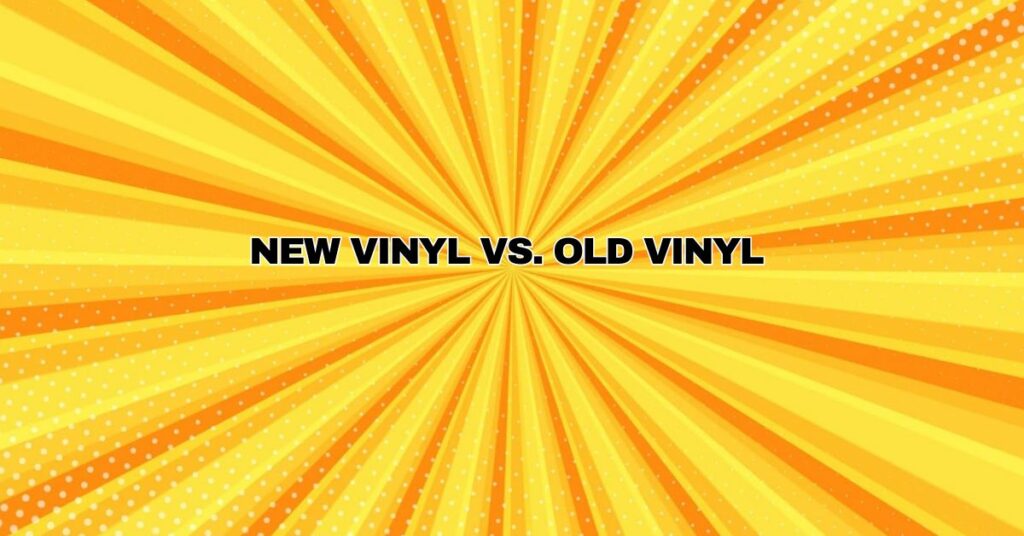The enduring allure of vinyl records is undeniable, captivating audiophiles, collectors, and music enthusiasts alike. Whether you’re a seasoned vinyl aficionado or a newcomer to the world of analog sound, understanding the differences between new and old vinyl records is essential for making informed choices and building a vinyl collection that suits your preferences. In this comprehensive article, we will conduct a thorough comparison of new vinyl vs. old vinyl, exploring aspects such as sound quality, availability, collectibility, and manufacturing processes.
Manufacturing Processes
Old Vinyl Records:
- Analog Era: Many old vinyl records, especially those from the mid-20th century, were produced during the analog era. This means that the entire recording and pressing process was analog, capturing music as continuous waveforms and using analog mastering and pressing techniques.
- Handcrafted: Older vinyl records were often crafted using more manual and hands-on methods. These records may exhibit subtle imperfections, such as surface noise and occasional pops and clicks, which are characteristic of analog recordings.
New Vinyl Records:
- Digital Age: Contemporary music, on the other hand, is often recorded and mastered digitally, leveraging advanced technology and software. The digital recording process allows for precise control over audio elements and manipulation.
- Modern Manufacturing: New vinyl records are typically produced using more advanced and automated manufacturing processes. These processes can result in records with lower surface noise and improved overall quality control.
Sound Quality
Old Vinyl Records:
- Analog Warmth: Many collectors and audiophiles appreciate the analog warmth and character of old vinyl records. They often find that the analog format imparts a unique sonic quality, including a warm and slightly “vintage” sound.
- Surface Noise: Vintage records, especially those that have seen extensive use, may exhibit surface noise, pops, and clicks. These imperfections are part of the vinyl experience and can contribute to the record’s charm.
New Vinyl Records:
- Digital Precision: Music recorded digitally and pressed onto new vinyl records can offer a precise and clean sound. Digital technology allows for accurate reproduction of the original recording without the warm analog coloration.
- Less Surface Noise: New vinyl records, when produced with high-quality materials and modern manufacturing techniques, often have lower surface noise and fewer audible imperfections compared to older records.
Collectibility and Rarity
Old Vinyl Records:
- Vintage Appeal: Old vinyl records, particularly those from the mid-20th century, hold significant historical and cultural value. Collectors often seek out original pressings of iconic albums and rare releases.
- Limited Availability: Some vintage records are no longer in production, making them rare and sought after by collectors. Limited availability can drive up the value of these records.
New Vinyl Records:
- Contemporary Releases: New vinyl records encompass a wide range of music genres and artists, including contemporary releases and reissues of classic albums. Collectors may seek out specific pressings or colored vinyl variants for their personal collections.
- Expanding Market: The resurgence of vinyl has led to an increase in the production of new vinyl records, providing enthusiasts with access to a wide selection of music across various genres.
Conclusion
The choice between new vinyl and old vinyl ultimately depends on individual preferences, musical tastes, and the desired listening experience. Old vinyl records offer the charm of analog warmth, historical significance, and collectibility, while new vinyl records benefit from modern manufacturing techniques, precise digital recordings, and lower surface noise.
Both new and old vinyl records have their unique appeal, contributing to the rich and diverse world of vinyl collecting. Whether you’re seeking the nostalgia of a vintage classic or the pristine sound of a contemporary release, the vinyl format offers a timeless and rewarding listening experience that continues to captivate music lovers around the world.


